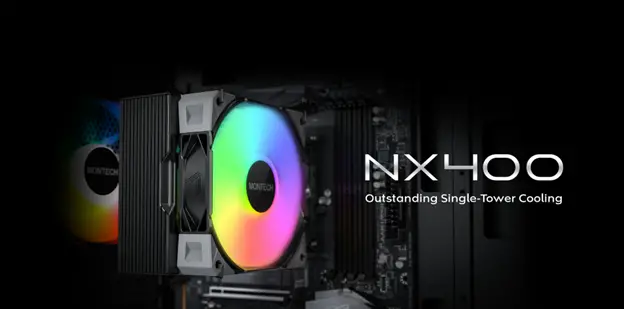In today’s modern manufacturing, efficiency stands as a critical cornerstone for sustainable growth and competitive advantage.
Over the years, technological advancements have continually reshaped the manufacturing sector, with automatic dispensing systems becoming a key influence in revolutionizing production processes across various industries.
This article delves into the transformative role of advanced automatic dispensing systems, elucidating their impact, applications, and the promising future they hold in optimizing manufacturing efficiency.
The Evolution of Automatic Dispensing Systems
The genesis of automatic dispensing systems dates back to rudimentary mechanical devices designed to automate tasks like fluid dispensing or material handling.
However, with the advent of sophisticated technologies such as robotics, IoT (Internet of Things), and AI (Artificial Intelligence), these systems have undergone a paradigm shift, becoming highly precise, adaptable, and integral components in modern manufacturing setups.
Enhancing Precision and Accuracy
One of the primary contributions of advanced automatic dispensing systems lies in their ability to achieve unparalleled levels of precision and accuracy. Whether it’s dispensing precise volumes of liquid in pharmaceuticals or applying adhesives in electronics manufacturing, these systems ensure consistency and uniformity, mitigating errors and minimizing material wastage.
The incorporation of sensors and AI algorithms enables real-time monitoring and adjustments, ensuring adherence to exact specifications with minimal human intervention.
Diverse Applications Across Industries
Today, the versatility of automatic dispensing systems transcends industry boundaries, finding applications in sectors like automotive, aerospace, healthcare, electronics, food and beverage, and more.
Aerospace Industry
Automatic dispensing systems are utilized for applying coatings, sealants, and bonding agents in aircraft assembly, ensuring structural integrity and resistance to extreme conditions.
Healthcare and Medical Devices
These systems play a critical role in the precise dosing and dispensing of medications in pharmaceuticals, contributing to the accuracy of formulations and enabling efficient drug delivery systems.
Electronics Manufacturing
Automatic dispensing systems are employed in the precise application of adhesives, encapsulants, and conformal coatings onto electronic components, enhancing their performance and longevity.
Food and Beverage Production
Within this industry, these systems aid in accurate portioning, filling, and packaging of food products, ensuring consistency, hygiene, and compliance with stringent quality standards.
Construction and Building Materials
Automatic dispensing systems are integral in dispensing concrete additives, waterproofing materials, and sealants, contributing to the structural durability of buildings and infrastructure.
Textile and Apparel Manufacturing
These systems are used for precise dyeing, coating, and finishing applications in the textile industry, ensuring color consistency and enhancing fabric properties.
Chemical and Petrochemical Industries
Automatic dispensing systems are employed for precise blending and dispensing of chemicals, contributing to the accurate formulation of products and reducing wastage.
Cosmetics and Personal Care Products
These systems aid in the accurate filling and dispensing of creams, lotions, and beauty products, ensuring consistent product quality and packaging precision.
Printing and Packaging
In this sector, automatic dispensing systems contribute to the accurate application of inks, coatings, and adhesives in printing and packaging processes, ensuring quality and efficiency.
Plastics and Rubber Manufacturing
These systems play a crucial role in dispensing additives, colorants, and coatings in the production of plastic and rubber products, ensuring uniformity and desired properties.
The adaptability of automatic dispensing systems across these diverse industries showcases their versatility and the importance of their role in enhancing manufacturing processes, quality control, and overall operational efficiency.
Optimizing Production Processes
The efficiency brought by automatic dispensing systems extends beyond precision. These systems streamline production processes, significantly reducing cycle times and increasing throughput.
The integration of robotics and automated workflows allows for continuous operation, minimizing downtime and enhancing overall productivity. By enabling rapid changeovers and customization capabilities, manufacturers can swiftly adapt to evolving market demands, fostering agility and responsiveness.
Quality Assurance and Compliance
In regulated industries such as pharmaceuticals and food production, adherence to stringent quality standards is paramount. Automatic dispensing systems equipped with advanced monitoring and control mechanisms uphold quality assurance protocols, ensuring compliance with industry regulations and standards.
Precise dispensing and tracking capabilities minimize contamination risks, safeguarding product integrity and consumer safety.
Environmental Impact and Sustainability
Beyond operational efficiency, the adoption of advanced automatic dispensing systems contributes significantly to sustainability initiatives. These systems optimize material usage, reducing waste and minimizing environmental impact.
Precise dispensing minimizes excess usage of raw materials, while recyclability and reusability of certain dispensing components align with eco-friendly practices, aligning with the global shift towards sustainable manufacturing.
Challenges and Future Prospects
Despite their myriad benefits, the adoption of automatic dispensing systems isn’t devoid of challenges. Initial implementation costs, integration complexities, and the need for skilled personnel for maintenance and programming pose hurdles for some manufacturers.
However, advancements in technology, coupled with increased awareness of the long-term benefits, are driving wider acceptance. The future of automatic dispensing systems appears promising, with ongoing innovations focusing on enhancing speed, scalability, and interoperability, thereby catering to diverse manufacturing needs.
Conclusion
The evolution and integration of advanced automatic dispensing systems represent a transformative force in manufacturing efficiency. From precision-driven operations to optimizing production processes and ensuring compliance, these systems have permeated various industries, reshaping the manufacturing landscape.
As technology continues to evolve, the potential for these systems to further enhance efficiency, sustainability, and adaptability in manufacturing remains boundless, marking a determining era in industrial evolution.
As industries continue to embrace automation and advanced technologies, the role of automatic dispensing systems as catalysts for manufacturing efficiency is set to become even more pronounced, propelling businesses toward greater competitiveness and sustainability in the global marketplace.











